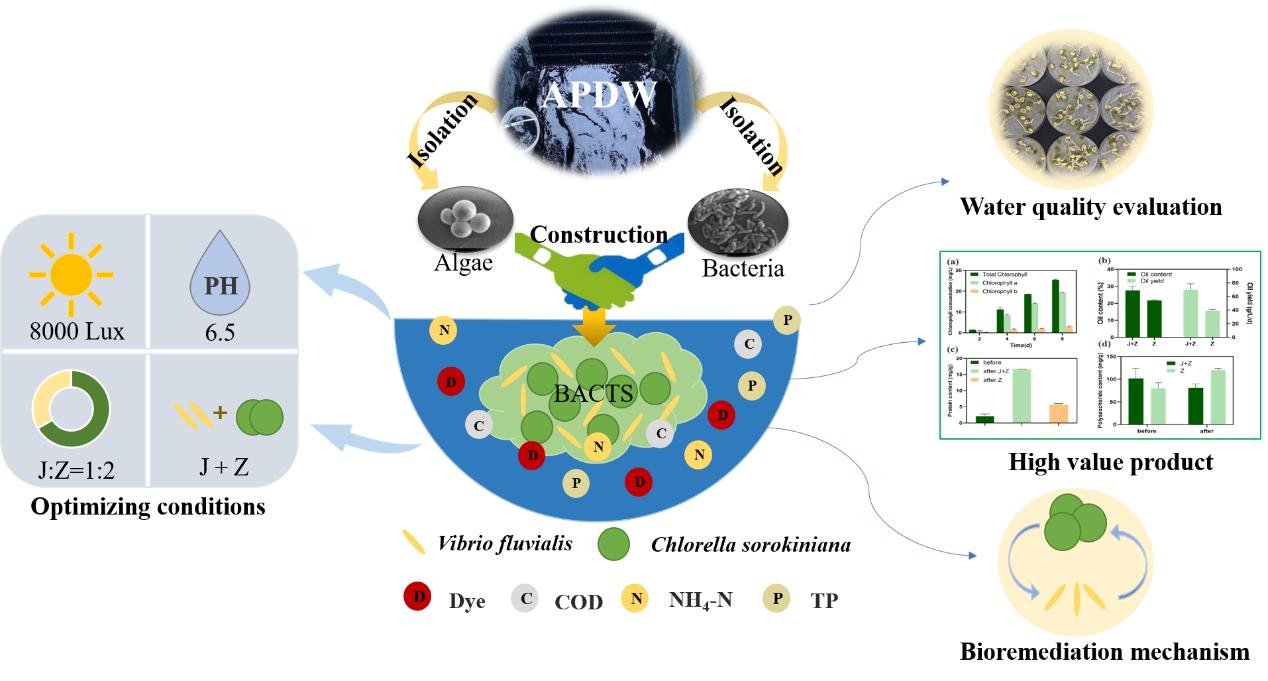
Printing and dyeing wastewater is rich in organic dyes, high concentrations of phosphorus, and other harmful components. This complex high salt organic wastewater poses a serious threat to the natural environment, agricultural production, and even human health. Printing and dyeing wastewater treatment is widely regarded as one of the biggest challenges in industrial wastewater management.
A research team led by Prof. WANG Guangce from the Institute of Oceanology of the Chinese Academy of Sciences (IOCAS) used algae to treat high salt organic wastewater and has made new progress recently.
Results of their study was published in Chemical Engineering Journal on Nov. 6.
Researchers constructed an efficient bacterial/algal synergistic biological treatment system (BACTS) using Vibrio fluvialis and Chlorella sorokiniana isolated from printing and dyeing wastewater, and optimized the conditions for BACTS treatment.
"In depth exploration of its mechanisms revealed that V. fluvialis and C. sorokiniana mainly functions through biological adsorption and biological transformation, which exhibit significant synergistic effects in BACTS, jointly accelerating the process of biodegradation and transformation," said WANG Lijun, one of first authors of the study.
Laccases, peroxidases, azoreductases and other enzymes play a crucial role in dye degradation and biotransformation processes, WANG said.
Under optimal conditions, this system exhibits excellent treatment efficiency for actual printing and dyeing wastewater, with removal rates of total phosphorus (TP), chemical oxygen demand (COD), and dyes reaching 87.31%, 73.23%, and 35.0%, respectively.
The overall water quality improvement rate reaches 55.6%, their results showed.
“Biological treatment of wastewater has unique advantages that other methods do not have, as it does not produce secondary pollution and is environmentally friendly,” said Professor WANG Guangce, also corresponding author of the study.
The synergistic system of bacteria and algae also has additional economic value. The treatment process can produce high value-added by-products including 27.63% of oil, polysaccharides of 81.1mg/g, and proteins of 16.62mg/g.
"This study provides a new type of wastewater biological collaborative treatment system by utilizing local bacteria and algae, providing an efficient and economical new strategy for treating wastewater," said Prof. WANG Guangce.

Construction of a Collaborative Wastewater Treatment Biological System Using Vibrio fluvialis and C. sorokiniana (Image by SONG Yuling & WANG Lijun)

86-10-68597521 (day)
86-10-68597289 (night)

86-10-68511095 (day)
86-10-68512458 (night)

cas_en@cas.cn

52 Sanlihe Rd., Xicheng District,
Beijing, China (100864)

